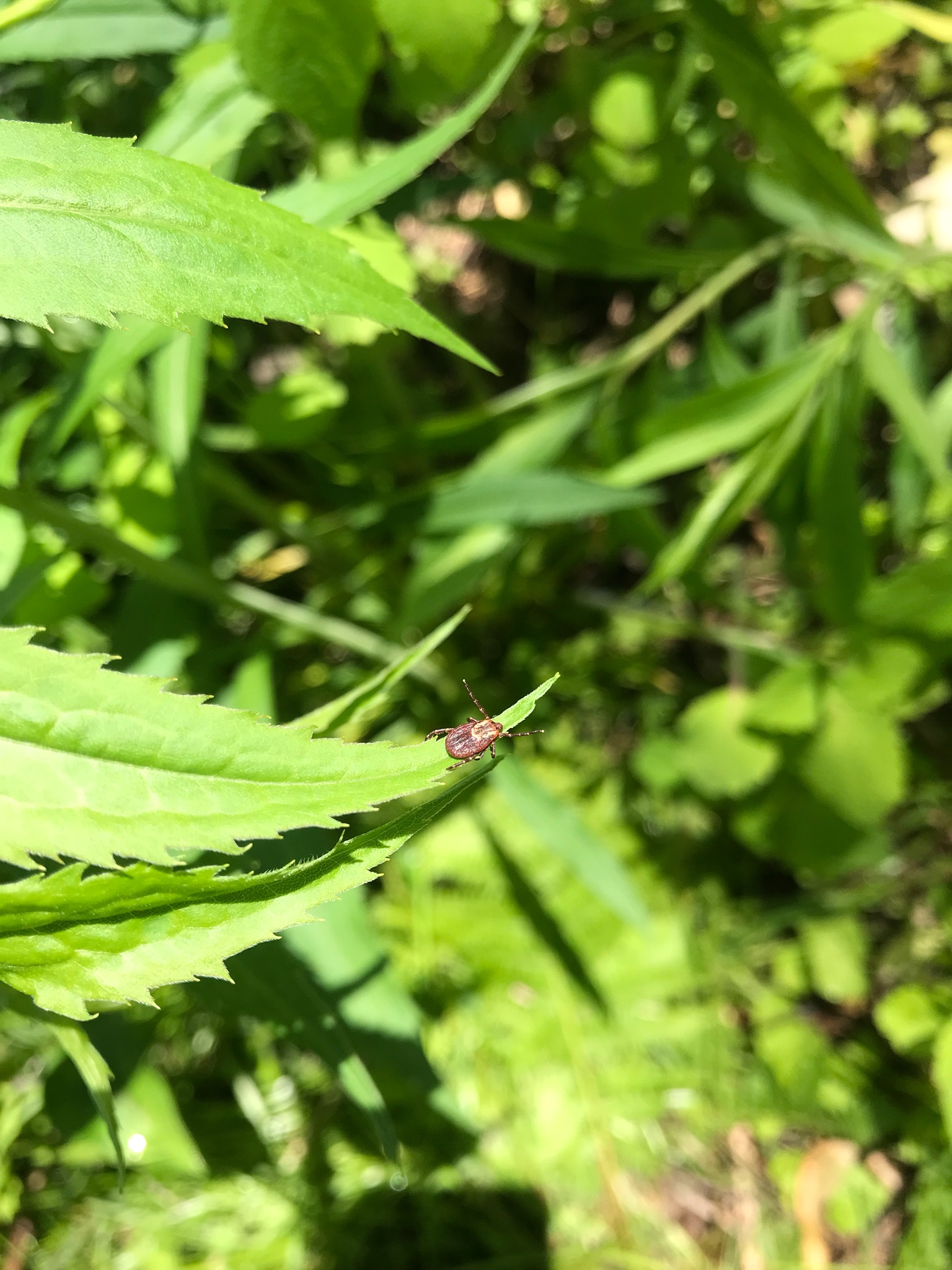Frequently Asked Questions About Deer Ticks (Blacklegged Ticks) and Lyme Disease
Can you get Lyme disease from a larval tick?
No. If an adult female deer tick is a carrier of Lyme disease, it is unable to pass it to the eggs she lays. Ticks can only contract Lyme disease if they take a blood meal from an infected host. Since larva have not taken their first blood meal yet, they are unable to have or transmit Lyme disease.
Can deer ticks get Lyme disease from deer?
No. White-tailed deer have not been shown to circulate the Lyme bacteria in their blood. Research suggests there are borreliacidal properties in deer blood that are capable of killing the bacteria that cause Lyme disease (Borrelia burgdorferi). If a tick is infected with Lyme disease, it is because it contracted it from another animal that was infected.
What does it mean when a deer tick is engorged?
As deer ticks feed, their bodies fill with blood and get bigger. This increase in size is referred to as engorgement and can be measured to determine how long the deer tick was feeding for.
Do adult male deer ticks feed?
Once a nymph deer tick molts into an adult male, it will look for an engorged adult female to mate with. Males will sometimes feed for short periods of time for extra energy, but often won’t feed at all because once they mate with an adult female they die. Adult female deer ticks need to feed to become fully engorged with blood so they have energy to carry and lay eggs before dying.
Why is the deer tick also called a blacklegged tick?
Deer ticks are the only tick species with black legs. In the past, it was assumed blacklegged ticks contracted Lyme disease from deer. However, this is a common misconception since deer do not carry Lyme disease. Scientists have moved towards referring to deer ticks as blacklegged ticks to avoid continuing this misconception.
What is the relationship between deer and the deer tick?
An important component of tick survival is having a host to feed on. Deer are large mammals that can provide a meal for thousands of blacklegged ticks. When ticks feed on deer, it is unlikely the deer will try to remove the tick. This creates the perfect environment for blacklegged ticks to mate, lay eggs, and complete the last stage of the life cycle as an adult. Deer contribute to increasing the tick populations but do not spread Lyme disease.
Why are nymph deer ticks most dangerous?
A nymph deer tick has already taken one blood meal in its life and has potentially contracted a disease. Because nymph ticks are so small, they go unnoticed allowing them to feed for extended periods of time. The longer a deer tick is attached, the more likely they will transmit any diseases they are carrying. While adult deer ticks have fed twice in their life and have a greater chance of carrying a disease, they are larger and are normally found sooner in their attachment, reducing the risk of transmission.
What is the difference between the Western blacklegged tick and the deer tick?
Ixodes pacificus or the Western blacklegged tick is very similar to the deer tick (Ixodes scapularis) but can only be found on the western coast of the U.S. in California, Oregon, and Washington. Both ticks have similar characteristics such as red bodies, black shields, no festoons on the abdomen, and long, thin mouthparts. Due to their differing locations, these ticks have evolved differently over time creating changes between them that can only be seen when looking at their genes.
How long do deer ticks live?
After hatching from their egg, a deer tick will live for about two years and take 2-3 blood meals before mating and dying.
How can you tell how long a deer tick was feeding for?
As nymph and adult female deer ticks feed, their bodies become larger and their shields remain the same size. A scutal index can be used to measure engorgement size, estimating the hours of attachment. When looking at a deer tick under the microscope we can take measurements of the width of the shield and the length of the body. We then divide the length of the body by the width of the shield and compare that number to a chart which gives us the approximate hours the deer tick was attached for.
What states do deer ticks live in?
Deer ticks have been identified in all U.S. states except Hawaii. They are most commonly found along the eastern coast of the United States from Florida to Maine and as far west as Texas. They are also located in the Great Lakes region of the upper Midwest United States.
Where are deer ticks found?
Deer ticks can be found under leaf-litter, at the edges of wooded areas, in areas of high grass or thick vegetation, and areas where wildlife are frequent. They require humid and shaded locations to protect them from drying out and dying.
What animals carry deer ticks?
Deer ticks will feed on more than 300 different animals. They are most commonly found feeding on shrews, chipmunks, mice, reptiles, birds, domestic animals (dogs), white-tailed deer, moose, and cattle. Of these animals, only mice, chipmunks, birds and shrews can carry and transmit Lyme disease to a feeding tick.
Where do deer ticks get Lyme disease from?
Infected adult female deer ticks cannot pass Lyme disease to their eggs. This means, when the eggs hatch, the larvae do not have Lyme disease. When a tick takes its first blood meal, it is at risk for contracting Lyme disease if the animal it feeds from is infected. If the animal is not infected, the tick will remain uninfected by Lyme. Every blood meal the tick takes puts it at risk for contracting Lyme from an infected host. The deer tick will take 2-3 blood meals in its life, giving it 2-3 opportunities to become infected. If the tick becomes infected during the 1st or 2nd feeding, it can transmit diseases to any animal it feeds on after.
How many eggs do deer ticks lay?
One adult female deer tick can lay as many as 3,000 eggs.
Where do deer ticks lay eggs?
Deer ticks will look for a protected and moist area to lay their eggs to prevent them from drying out such as under leaf litter, in shaded areas, under tall grass and vegetation, or under fallen trees.
How many deer ticks are found to have Lyme disease?
Current research conducted by the Northeast Wildlife DNA Laboratory has identified, out of 2,588 deer ticks tested, 30% are positive for Borrelia burgdorferi, the bacterium that causes Lyme disease. Adults typically have a higher rate of infection than nymphs and northeastern states such as Pennsylvania, New Jersey, and Connecticut have a higher rate of Lyme positive deer ticks than other areas of the U.S.
Can deer ticks carry more than one disease at a time?
Yes. Deer ticks can be co-infected with many diseases at one time. Current research conducted by the Northeast Wildlife DNA Laboratory has identified 49% of ticks carry more than one infection.

